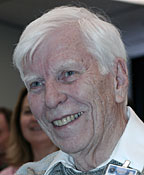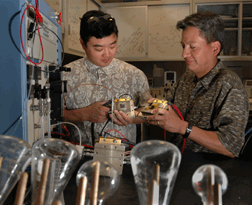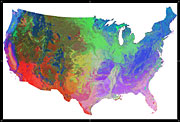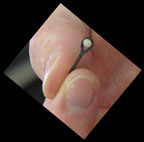| Research
|
|
|||||||||||||||||||||||||
|
A search for no color
According to the fundamental theory of particle physics, the subatomic world is a very colorful place. The theory predicts that quarks and gluons, the tiny building blocks of protons and neutrons in the nucleus of the atom, have a special kind of charge called color. Color charge comes in three varieties: red, blue and green. Quarks only exist in combinations where their color charges add up to no color. For instance, a proton, which has three quarks, has a quark of each color, adding up to white (no color). While a proton itself has no color, color charge from its individual quarks still leaks out, allowing a proton to interact with other particles. That's how protons and neutrons bind together to makeup the atomic nucleus. But Kawtar Hafidi, an Assistant Scientist at Argonne , and her colleagues are looking for quark-based particles with color charge that doesn't leak out. Hafidi is a spokesperson for the 101st experiment to conclude data-taking at Jefferson Lab, an experiment looking for color transparency. Hafidi says quantum theory predicts that there are particles that are so small, because their quarks are bound together so tightly, they can coast along without interacting with other particles. When this happens, it's said the medium these particles are traveling through is ‘color transparent.' “It's like the particle becomes invisible to the medium,” Hafidi says, “If we see the signal that we're looking for in these results, it will be the first evidence of color transparency ever. It's very important. There are no other theories that can explain the results we're anticipating without color transparency.” She expects her team will have preliminary results as early as December.Submitted by DOE's Jefferson Lab |




 In the experiment, scientists use CEBAF'S accelerator to slam electrons into the nuclei of a target element. Pictured here is a sample aluminum target.
In the experiment, scientists use CEBAF'S accelerator to slam electrons into the nuclei of a target element. Pictured here is a sample aluminum target.